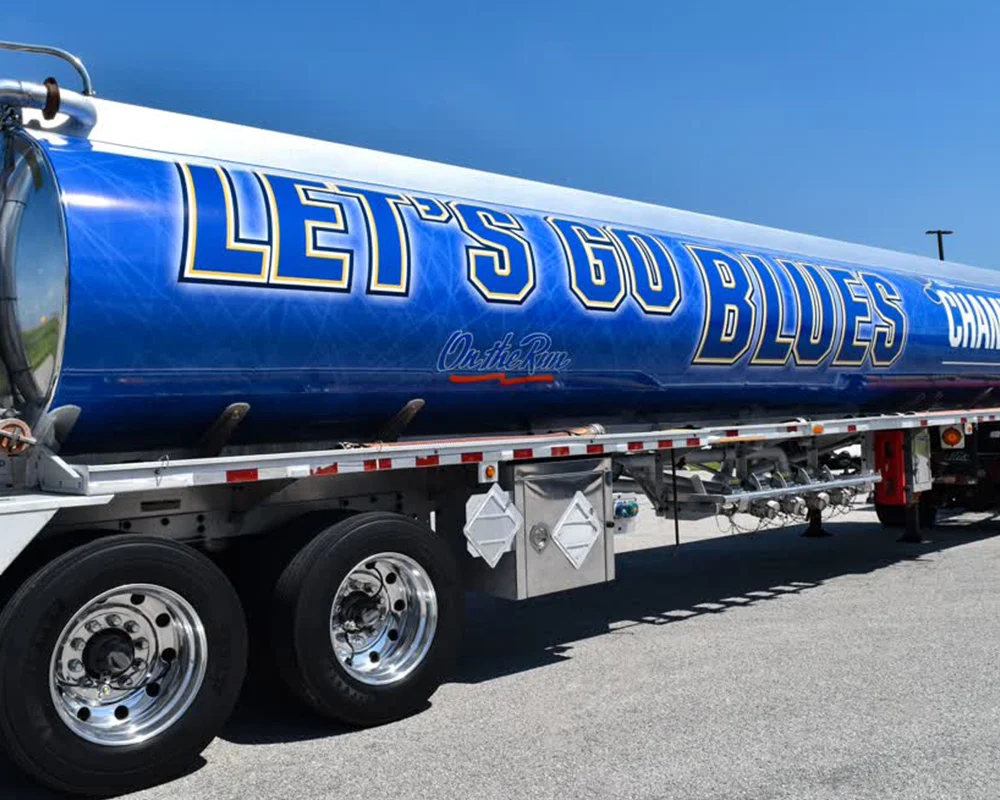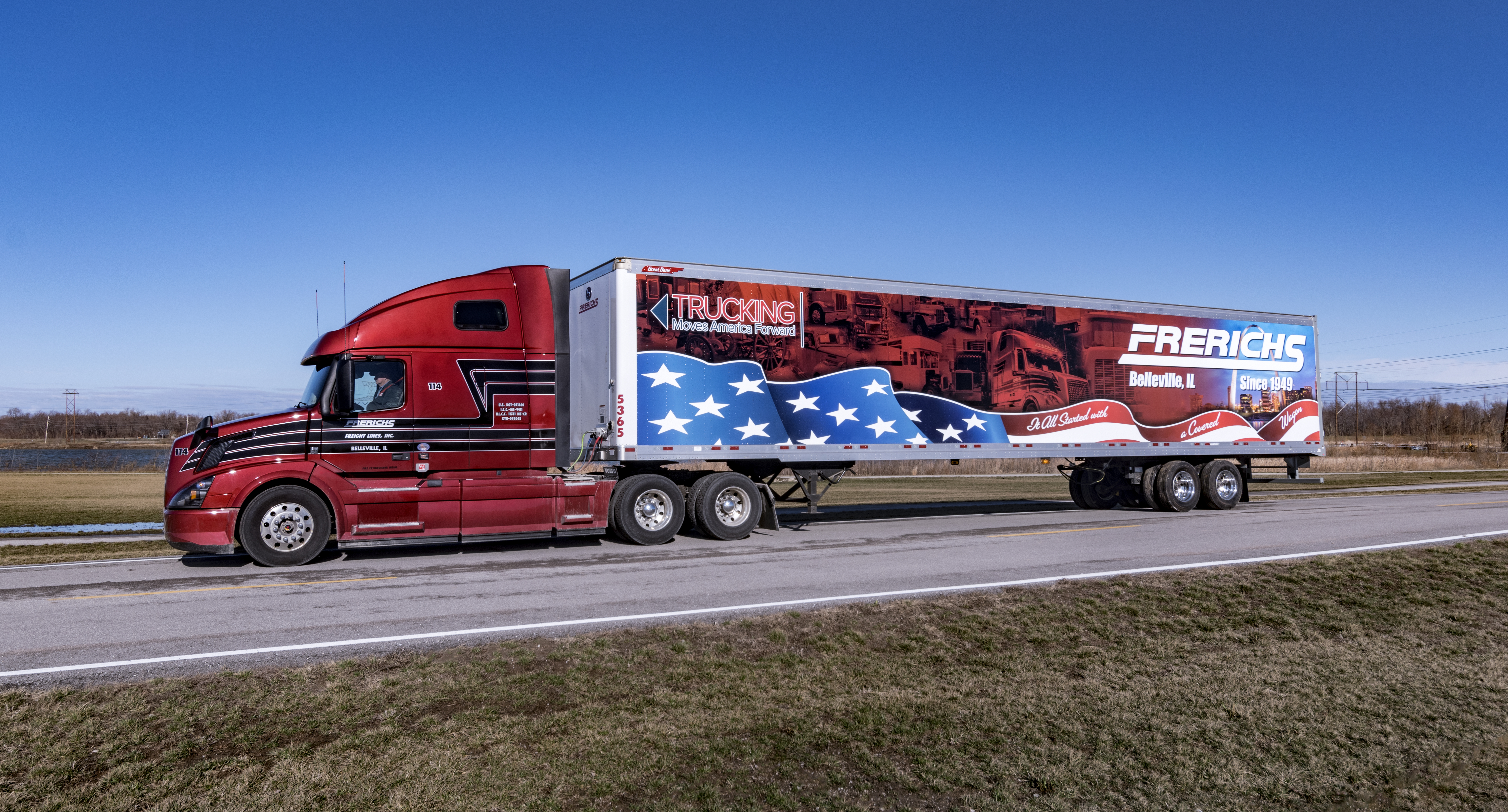Common Design Mistakes to Avoid When Creating Fleet Wraps?
Fleet wraps offer many benefits for businesses, from protecting the vehicle to creating a moving marketing campaign. But for the marketing efforts to...


If you have several trucks, fleet wraps are among the most influential and professional-looking advertisements available to your business. Professional transportation companies, grocery and bakery chains, and civil construction corporations are just a few of the many industries that rely on trucks and trailers to connect supply chains and deliver goods and services.
It is important to remember that the condition of your truck's signage can also reflect on your company. Keeping them in top condition should be a high priority.
Let’s dissect some common questions fleet wrap owners have and the corresponding best practices to keeping your fleet on the roads making positive impressions:
Vehicle wraps, including fleet graphics, provide some protection from salt corrosion. However, wraps aren’t an impenetrable barrier by any means. If it is allowed to build up, salt can damage the vinyl and other parts of the truck.
The best way to protect against salt damage is to wash your fleet regularly. This might mean washing the entire fleet once a week during winter if your fleet drives a lot on salted highways.
To remove any hidden salt, make sure to deep clean the fleet at the end of the winter season. You don’t want it eating away at the wrap or truck throughout the summer. To take the stress out of salt corrosion, try contracting with cleaning businesses. Find one who does a thorough job.
Yes, pressure washers are a great help when cleaning your fleet. When using a pressure washer, make sure the pressure is not too high, and the stream is not concentrated in one place. To avoid damaging the vinyl, keep the stream from the pressure washer under 2000psi, use a nozzle with a 40-degree wide angle spray pattern, and keep the water temperature below 140° Fahrenheit. Spray nozzles must be kept at least 12 inches away from edges.
Pressure washers are more powerful and less damaging to fleet wraps than brush-type car washes. In general, avoid automated brush washes. They can cause the vinyl to flake and fade.
Any gentle automotive detergents will do the job. Use with a high-quality sponge or soft cloth. Avoid using these types of cleaners:
Gasoline, bird droppings, and other pollutants can cause unsightly stains. While it is best to remove them as soon as possible, you may not notice them at first. If allowed to remain on the vinyl, though, they can be nearly impossible to remove and potentially damage the paint underneath.
To remove stains, use a small amount of two-parts isopropyl alcohol to one-part water. Then, rinse the wrap well with cold water. Be careful not to overdo the alcohol, as it can cause the wrap to fade. Always test the solution on a small area first.
Peeling is one of those problems you need a professional to look at and fix. In general, you can avoid peeling altogether by investing in a quality wrap and cleaning your fleet wraps properly and regularly.
The common causes of peeling include:
Air pollutants can turn fleet wraps brown if you do not clean them regularly. The best way to avoid this is by scheduling regular cleaning for your entire fleet and parking trucks in sheltered areas when they are not in use.
It might be too late if your fleet wraps are already discolored. Depending on the degree of staining, it may be best to enlist the help of your fleet wrap professional. They will assess the damage and can remove and replace the damaged section.
The ROI (return on investment) of fleet graphics is directly linked to how well you take care of them throughout the year. Well-maintained fleet graphics are a massive asset to your business. Neglected wraps can detract from your brand’s reputation.
The grand majority of trucking companies have industry competitors. Making impressions on thousands of people everyday, fleet wraps allow you to stand apart from similar businesses. Rather than always playing catch up, make your standard of clean and stain free wraps the standard the rest of the industry aspires toward.
Maintenance also increases fleet wrap lifespans, limiting replacement costs. Fleet wraps will last years without diligent care, but with consistent and thorough cleaning they can last for more than a decade.
Finally, consumers may link how well you take care of your fleet wraps to how well you take care of the products you transport. Whether it’s food, furniture or fast-delivery packages, your truck wraps reflect your commitment to quality service. So, make the profitable investment to care for your wraps the right way and keep them shining all year long.

Fleet wraps offer many benefits for businesses, from protecting the vehicle to creating a moving marketing campaign. But for the marketing efforts to...

Using fleet wraps on vehicles is an excellent way to advertise your brand. While you are browsing through your options, you might wonder what...

If you’re at a crossroads in deciding between the types of fleet wraps, understanding their unique qualities can help you make an informed decision....